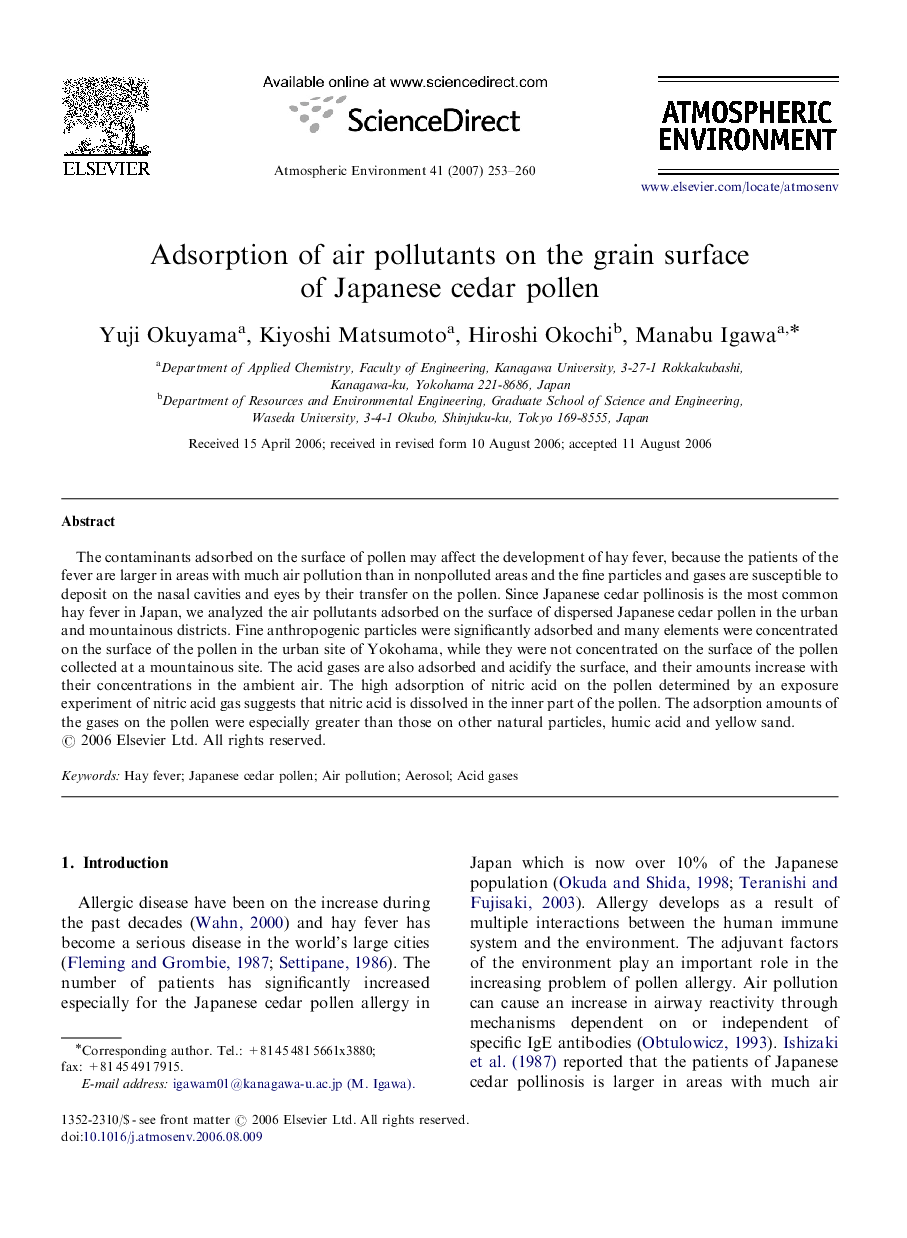| Article ID | Journal | Published Year | Pages | File Type |
|---|---|---|---|---|
| 4443947 | Atmospheric Environment | 2007 | 8 Pages |
The contaminants adsorbed on the surface of pollen may affect the development of hay fever, because the patients of the fever are larger in areas with much air pollution than in nonpolluted areas and the fine particles and gases are susceptible to deposit on the nasal cavities and eyes by their transfer on the pollen. Since Japanese cedar pollinosis is the most common hay fever in Japan, we analyzed the air pollutants adsorbed on the surface of dispersed Japanese cedar pollen in the urban and mountainous districts. Fine anthropogenic particles were significantly adsorbed and many elements were concentrated on the surface of the pollen in the urban site of Yokohama, while they were not concentrated on the surface of the pollen collected at a mountainous site. The acid gases are also adsorbed and acidify the surface, and their amounts increase with their concentrations in the ambient air. The high adsorption of nitric acid on the pollen determined by an exposure experiment of nitric acid gas suggests that nitric acid is dissolved in the inner part of the pollen. The adsorption amounts of the gases on the pollen were especially greater than those on other natural particles, humic acid and yellow sand.
